Dahlia Tubers Can Multiply Quickly – Divide Them Every Few Years For Optimal Growth

PERENNIALS > DAHLIAS > DIVIDING

Ed is a horticultural therapist, professional gardener and writer. Ed has a BSc in Occupational Therapy from Coventry University and a Diploma in Social and Therapeutic Horticulture (DipSTH) via Thive, the RHS and Pershore College. Ed runs a community kitchen garden in West Sussex, where he leads horticultural therapy sessions.
Reviewed By DAN ORI

Dan has over 27 years’ under his belt caring for plants and gardens. Working as a Horticultural Instructor and Consultant, he draws on a diverse range of experience that includes working as a Head Gardener, Tree Surgeon, Garden Centre Trouble Shooter, and writer of academic papers. Dan has a Level 3 Diploma in Horticulture and is currently a candidate for the RHS’s most prestigious award – The Master of Horticulture.
Dahlias are a must-have tuberous perennial for any garden, as they are available in all shapes, sizes and colours and can flower for months on end.
Dahlia tubers can grow and multiply quickly, which is why it is often suggested to divide them every year or two.
Dividing the tubers not only helps the parent plant to remain healthy and keep blooming but provides new dahlia plants to add to the garden or give away.
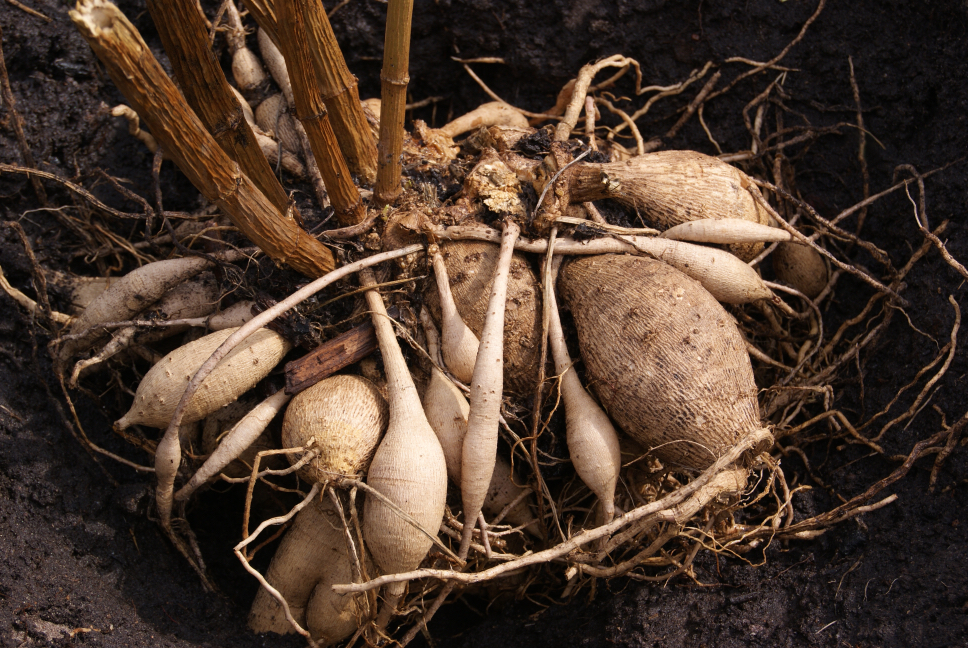
In colder climates, it is advisable to lift and store dahlia tubers to overwinter safely.
However, in milder parts of the United Kingdom, dahlia tubers can usually be mulched and left in the ground to overwinter and divided in early spring.
You can lift and divide dahlia tubers by following these steps:
- Lift the plants using a garden fork or spade
- Knock off any excess soil
- Divide the tubers using your spade or secateurs
- Store or pot up your tubers
I have explained this entire process in more depth below.
| Difficulty | Medium |
| Equipment Required | Garden spade or fork, gloves, secateurs or knife, steriliser, pots, sand or newspaper, compost. |
| When To Divide | March, April, May, June |
1) Lift The Plants
Whether in spring or winter, the dahlias tubers need to be lifted in order to divide them.
This can be done by carefully digging around the plant with a fork or spade and lifting the clump of tubers out of the soil or pot.
2) Remove Excess Soil
Once lifted, the tubers need to be cleaned so they are ready to divide or store.
Any soil needs to be removed for the tubers, which can be gently done using a soft brush or hose spray.
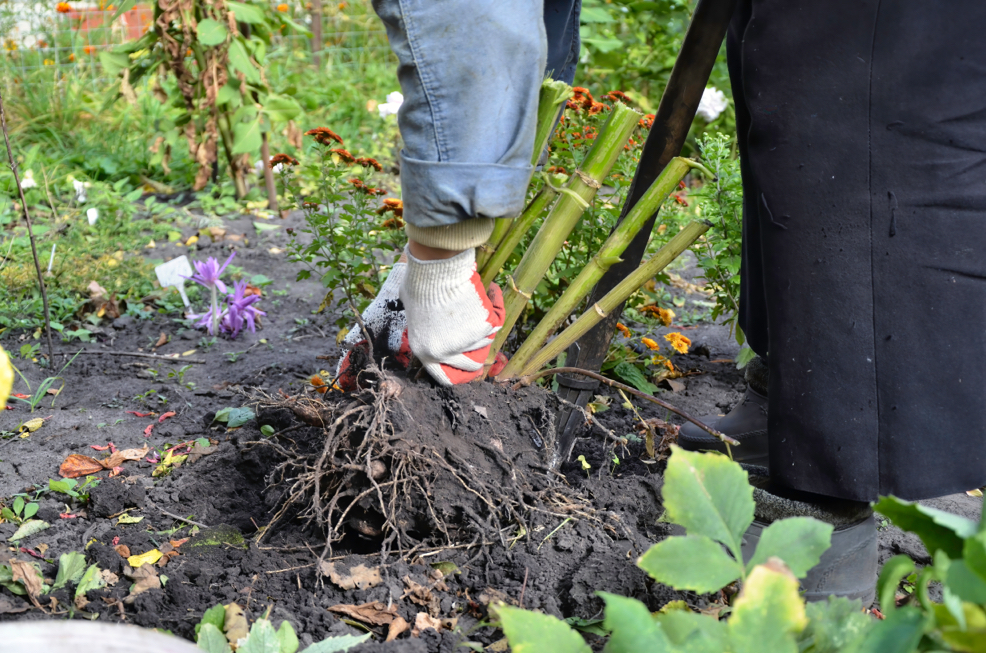
Once cleaned, allow the tubers to dry for a few days and cut off any rotten, soft or dead material with a pair of clean and sharp secateurs.
3) Divide Your Tubers
When dividing dahlia tubers, it is important to note that only a tuber with an eye present will grow into a new plant.
Any tubers that do not have an eye will not be productive and can be added to the compost heap.
Identifying the eyes on the tubers can be tricky.
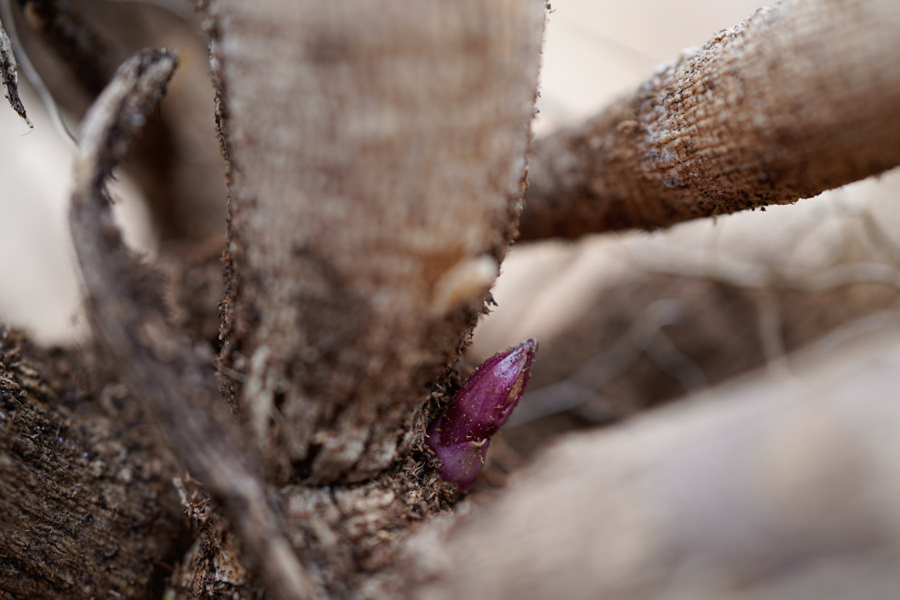
The eyes are situated at the top of the tubers, by the previous year’s stem and can look like a black or coloured little bump.
Unlike potatoes, dahlias do not produce eyes on the body or end of the tubers.
If no eyes are visible, the clump can simply be cut into 3-4 equal pieces which will most likely all have an eye or two each.
Alternatively, the tubers can be left in a warm environment to encourage the eyes to develop and swell and be easier to identify.
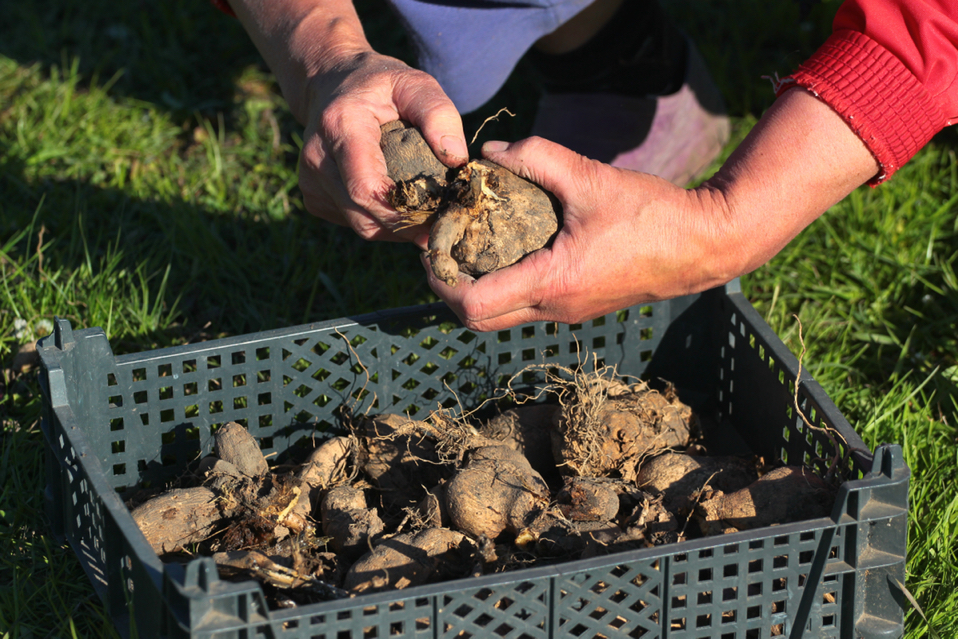
Dahlia tubers can be susceptible to infection from the wounds made when being divided, thus it is recommended to use a clean and sharp knife that is sterilised in between plants.
To divide the tubers, simply cut the tubers apart at the neck, whether in small clumps or individually, making sure each division has a healthy tuber with an eye present to grow from.
Allow the separated divisions to rest for 2-3 days, which will allow the wounds to dry a little before storing for longer or potting up.
4) Store Or Pot Up
The divided tubers can then continue to be stored until required or potted up to grow on.
Dahlia tubers need to be stored in a cool, dry, dark and frost-free environment until all risk of frost has passed when they can then be planted out.
To store, the tubers can be placed in pots or boxes and covered with dry sand or vermiculite, or wrapped in newspaper and placed in a frost-free garage or greenhouse.
Alternatively, in March or April, the tubers can be potted up in suitably sized pots with a peat-free general-purpose compost.
I would advise planting with the eye up, to a depth so that the top of the tuber is just below the soil surface and any old stems above.
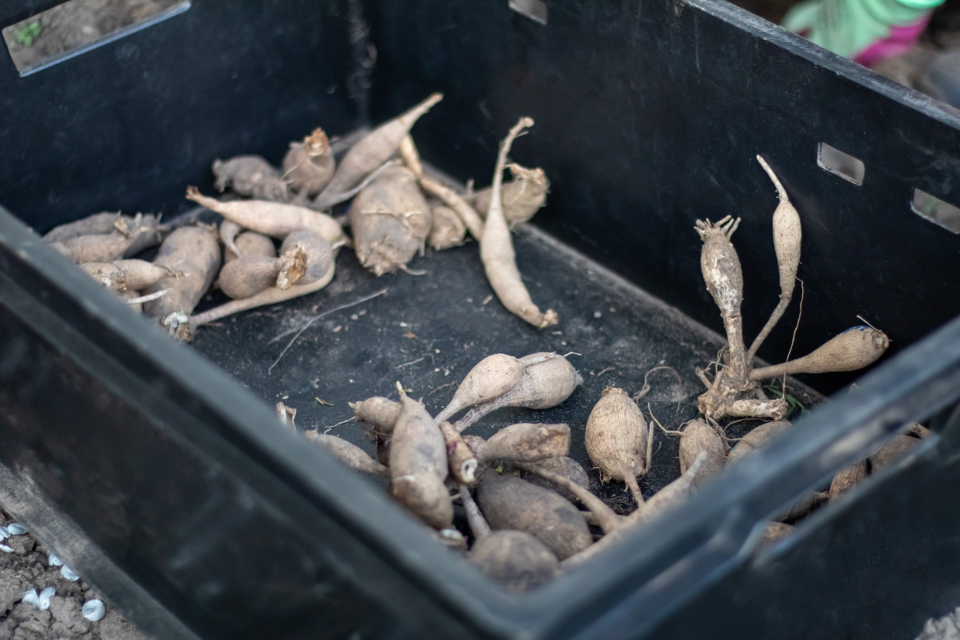
Water and grow on in a greenhouse until after the last frost and the plant is big enough to fend off any slug or snail attack.
Whether the divisions are for storing or potting up, don’t forget to label them, as dahlia tubers can be very difficult to distinguish between.
“What if your Dahlia doesn’t have tubers?” asks Master Horticulturist Dan Ori.
“This is common in bedding Dahlias and will be the case for any newly propagated plant from a cutting or seed.
“Newly propagated plants will have a more fibrous root system but given favourable conditions, these plants will develop a fasciculated tuberous root (tuber) over time.
“It is commonly encountered that when people dig up young plants or bedding Dahlias in autumn that they have not had a chance to develop a tuberous system yet.
“In this case, I would advise keeping the plant (or cuttings from) in a heated greenhouse or conservatory to over winter.”
